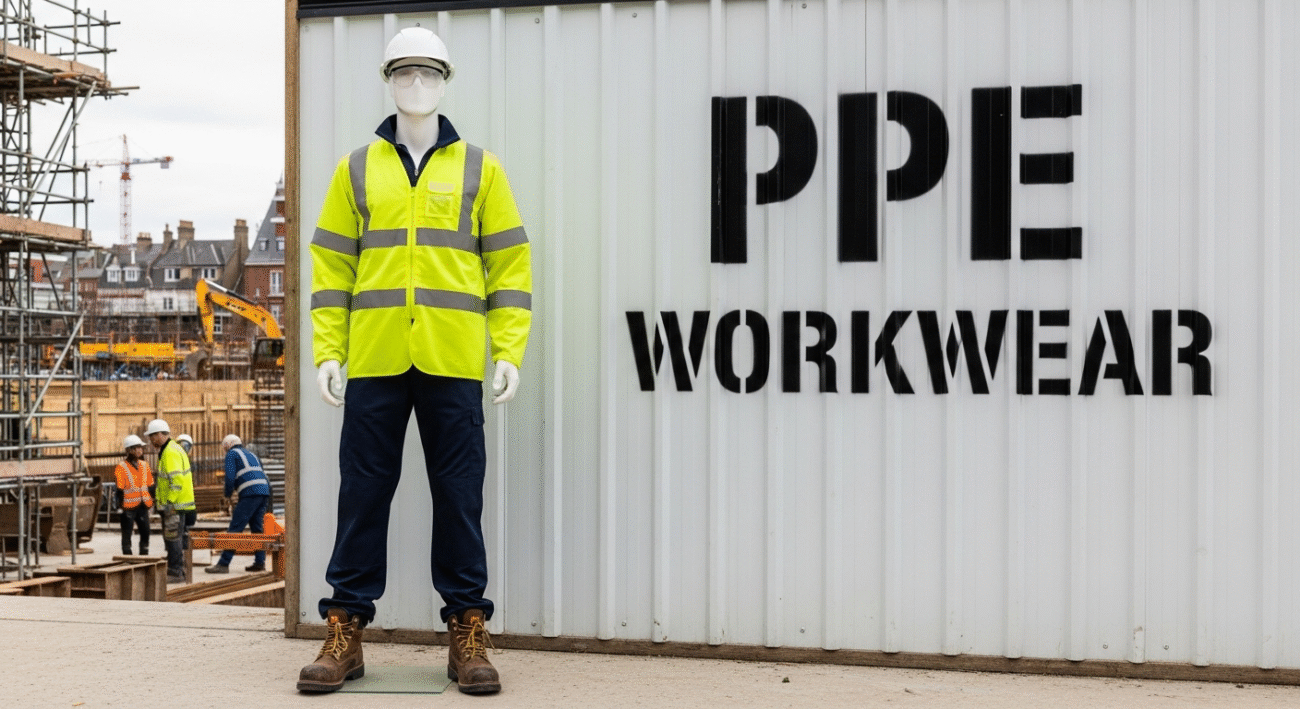Road Safety Clothing: Essential High-Visibility Workwear Clothing for Road Workers in July 2025
 Road safety is a paramount concern in construction zones, highways, and urban streets where road workers operate daily. Ensuring the visibility and protection of these workers is critical to preventing accidents and enhancing overall safety. One key aspect of this is the use of high-visibility road safety clothing designed to make workers easily seen by motorists and equipment operators, especially in challenging environments and adverse weather conditions.
Road safety is a paramount concern in construction zones, highways, and urban streets where road workers operate daily. Ensuring the visibility and protection of these workers is critical to preventing accidents and enhancing overall safety. One key aspect of this is the use of high-visibility road safety clothing designed to make workers easily seen by motorists and equipment operators, especially in challenging environments and adverse weather conditions.
Why Is Road Safety Clothing Crucial for Road Workers?
Road workers are frequently exposed to hazardous environments with fast-moving vehicles, heavy machinery, and varying weather conditions. Visibility plays a key role in reducing accidents and injuries. High-visibility clothing helps by:
- Increasing Worker Visibility: Bright colors and reflective materials make workers stand out against the background, especially in low light or dark conditions.
- Enhancing Driver Awareness: Drivers can spot workers from a distance, allowing more time to slow down or maneuver safely.
- Complying with Safety Regulations: Wearing appropriate high-visibility clothing is a legal requirement in many regions, helping organizations meet occupational health and safety standards.
- Protecting Against Elements: Many road safety clothes are designed to provide weather resistance, thermal protection, or additional durability against physical hazards.
Features of High-Visibility Road Safety Clothing in 2025
Road safety clothing has evolved significantly with advances in textile technology. Today’s high-visibility workwear incorporates multiple features designed specifically to address the challenges faced by road workers:
1. Fluorescent Colors
Fluorescent colors such as neon yellow, orange, and lime green are used to maximize visibility during daytime and dawn/dusk hours. These bright hues reflect more sunlight and are easier for the human eye to detect over long distances.
2. Reflective Tape and Striping
The integration of retroreflective tapes enhances visibility at night or in poor weather conditions. These strips reflect light from vehicle headlights back to drivers, outlining the shape and movement of the worker.
3. Breathable and Durable Fabrics
Advanced materials like polyester blends offer a balance between breathability and durability. They prevent overheating during summer heat while resisting tears and abrasions.
4. Waterproof and Weather-Resistant Options
Road workers often face rain, wind, and cold temperatures. Many high-visibility garments now include waterproof membranes or coatings that keep workers dry without sacrificing visibility or comfort.
5. Ergonomic Design
Fit and comfort are vital to ensure compliance. Modern safety garments come with adjustable features, stretch panels, and ventilation zones tailored for mobility.
6. Integrated Safety Enhancements
Some workwear also features additional protective elements such as reinforced elbows, padded knees, and anti-static properties to increase overall worker safety.
Types of Road Safety Clothing
There are various types and layers of high-visibility clothing designed for different work conditions:
- High-Visibility Vests: Lightweight and often sleeveless, these are suitable for short-term or light-duty tasks.
- Jackets and Coats: Provide added protection against cold and wet weather.
- Trousers and Bib Overalls: Increase overall visibility and protection, often with reflective stripes on legs.
- Coveralls: One-piece garments offering high visibility and protection in rugged or extended-duty conditions.
- Accessories: Caps, gloves, and gaiters in high-visibility colors boost safety further.
Global Standards and Compliance for High-Visibility Workwear
Understanding and adhering to safety standards is essential for road workers and employers alike. The most widely recognized standards include:
- ANSI/ISEA 107 (USA): Specifies requirements for high-visibility safety apparel and headwear. Classification levels (Class 1, 2, or 3) indicate the garment’s visibility level under various risk conditions.
- EN ISO 20471 (Europe): Standard for high-visibility clothing with performance criteria for color, reflectivity, and placement.
- AS/NZS 4602.1 (Australia/New Zealand): Specifies requirements for high-visibility garments for daytime and night use.
These standards ensure that garments provide a minimum level of visibility, durability, and functionality required for worker safety.

How to Choose the Right Road Safety Clothing in 2025
Choosing the right high-visibility workwear depends on various factors:
1. Visibility Level Required
Assess the working environment—if workers are near fast traffic or in complex zones, Class 3 (ANSI) or equivalent garments with maximum visibility are essential.
2. Weather and Climate
Select waterproof and insulated garments for wet or cold environments. Breathable materials suit hot climates.
3. Task and Mobility Needs
Consider ergonomic features for flexibility and comfort, especially for physically demanding jobs.
4. Durability
Choose materials that withstand abrasion, frequent washing, and environmental exposure.
5. Compliance
Ensure all chosen garments meet local regulatory standards for road safety.
Care and Maintenance of High-Visibility Road Safety Clothing
Proper care ensures longevity and performance:
- Always follow manufacturer washing instructions.
- Use mild detergents and avoid fabric softeners that can reduce reflectivity.
- Inspect reflective tapes regularly for wear or damage.
- Replace garments that are faded, torn, or lose reflective properties.
- Store in a cool, dry place out of direct sunlight when not in use.
Innovations Shaping the Future of Road Safety Clothing
Looking ahead, several emerging technologies promise to enhance road worker safety:
- Smart Fabrics: Garments with embedded LEDs or sensors to increase visibility and monitor worker health.
- Eco-Friendly Materials: Sustainable and recyclable high-visibility fabrics minimizing environmental impact.
- Enhanced Reflective Technologies: New reflective materials offering higher brightness without compromising comfort.
- Integrated Communication Devices: Clothing designed to incorporate radios or alert systems for instant worker-driver communication.

Conclusion
Road safety clothing is a cornerstone of ensuring the wellbeing of road workers as they carry out their vital tasks. In 2025, advances in materials, design, and technology have made high-visibility workwear more effective, comfortable, and versatile than ever before. By understanding the importance of these garments, choosing the right apparel suited to specific needs, and maintaining them properly, workers and employers can significantly reduce accidents and enhance safety on the roads.
Frequently Asked Questions (FAQs)
1. What colors are considered high-visibility for road safety clothing?
Fluorescent colors such as neon yellow-green, orange, and bright red are standard high-visibility colors due to their brightness and ability to stand out during daytime and low-light conditions.
2. How often should high-visibility clothing be replaced?
Typically, when the garment shows signs of fading, reflective tape peeling, tears, or any damage that reduces visibility, it should be replaced. Regular inspections every few months are recommended.
3. Can I wash high-visibility clothing in a regular washing machine?
Most high-visibility garments can be machine washed but always follow the manufacturer’s instructions. Use mild detergents, avoid bleach and fabric softeners to maintain fabric and reflective properties.
4. Are there specific standards my road safety clothing must meet?
Yes, depending on your region, standards like ANSI/ISEA 107 (USA), EN ISO 20471 (Europe), or AS/NZS 4602.1 (Australia/New Zealand) apply. Ensure your garments comply with relevant standards.
5. What is the difference between Class 1, Class 2, and Class 3 high-visibility garments?
These classes reflect the level of visibility protection: Class 1 is for low-risk environments, Class 2 for moderate risk, and Class 3 for high-risk environments with high traffic or speed, requiring the highest visibility level.

